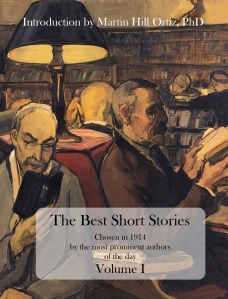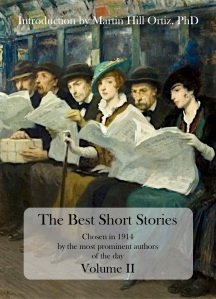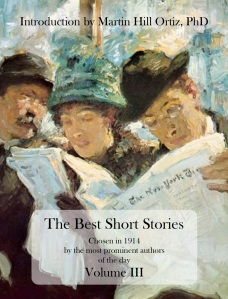The Evolution of the Short Story
That which is commonly considered the modern short story—the short story as a distinct art form and separate from folk tales and odes—came into being as recently as the beginning of the nineteenth century.
Early literature was dominated by poetry. Of the nine Greek muses, four were directly assigned to poetry and songs. Three more represented tragedy, comedy, and history, which, in ancient Greece, were written in verse form. (The remaining two were dedicated to dance and astronomy.) This tradition continued to reign for millennia. Chaucer’s tales and the epics of Dante, Milton, and Coleridge were communicated in metered stanzas. In other countries, authors such as Don Juan Manuel and Boccaccio produced short narrative fictions, but until the nineteenth century, English literature remained dominated by what were considered the proper forms for classical composition: drama and verse.
To break from this tradition, storytellers needed more than just a desire to write in prose: they needed an outlet in which to publish their creations. Technology in the early nineteenth century had allowed newspapers to expand in size. Space became available to fill with stories, often “sketches,” brief, plotless, albeit artistic, descriptions of people, events, and places. Fables and fairy tales were set to paper by various authors, including E. T. A. Hoffmann and the Grimm Brothers. The arrival of gift books in the early 1800s allowed novels and short story collections to be sold in quantities sufficient to make writing a profitable venture—establishing writing as a career and not merely a pastime for the wealthy. Authors became renowned figures, attracting others to the field who envied their talents and success and who wished to achieve the grandeur of their art. Those delving into storytelling reached a critical mass that allowed the form to mature.
What defined the art form of the short story that emerged? A novel has the length and luxury to examine multiple characters and allow their dilemmas to play out over a broad period of time. A short story, although it may have a supporting cast, generally focuses on a single character undergoing a single crisis.
The early stories began to break free of the constraints of the character sketch and parable forms. Together with the main character(s), the reader was taken on a brief journey. Through crisis, true nature and truths—both small and universal—could be revealed.
Early stories often mixed in poetry, in part to demonstrate the author’s writing chops. Allusions to the classics and bits of Latin were often sprinkled into the text. As a mirror of poetry, many of the stories included deeper meanings and symbols bubbling just beneath the surface. Such is the case in The Fall of the House of Usher, where both the building’s structure and the occupants are fatally flawed and must ultimately break. In another of Poe’s works, the treasure-hungry Legrand is literally bitten by a golden bug in The Gold Bug.
In the late 1800’s publication technology and mail delivery improved so as to allow for the broad distribution of national magazines. In this environment, the short story flourished. Authors such as Mark Twain, Robert Louis Stevenson, and Rudyard Kipling became international celebrities.
Nineteenth century short stories were meant to help sell magazines. They were populist in format. They often took on genres such as mystery, melodrama and horror.
Next: genres and styles.













0 comments:
Post a Comment